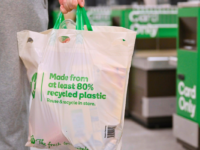
Grocery retailers in the US including Walmart have been using data technology to combat the lost-sales problem for years. Now, Australian supermarkets are starting to see the power behind this data.
In April, Woolworths became the first Australian retailer to invest in a free lost-sales monitor, called Compass, which allows suppliers to monitor the performance of their products in each store.
Compass draws on historical sales patterns to calculate dynamic daily sales expectations for every product in every store, and alerts suppliers if sales drop below expectations. As a result out-of-stock or merchandising issues can be solved faster.
Woolworths believes the Compass app has the potential to recoup millions in lost sales for suppliers while also improving product availability and merchandising for customers.
Australian field sales agency Crossmark trialled Compass during its development, with Lion Dairy and Drinks one of the first companies to test it out.
“Working with Lion we developed a merchandising program for them specifically to look at their data,” Crossmark director of operations Luke Johnson explains to Inside FMCG.
“We would find the stores that would have the biggest problem with lost sales. We would then look at what products they were, what time of day it was occurring and what day of the week; with all that data we were able to build a very specific merchandising program.”
The team discovered that a lot of stores were getting milk deliveries in the morning while Lion’s would arrive at about 10am, meaning they were missing out on the morning refill. Flavoured milk gets heavily shopped in the morning and after school/work by tradies and schoolkids so if there is not a full supply at those times, they will lose a lot of sales.
“Some of the outputs were some bad store practices, but there was also some supply chain delivery issues flagged that meant Lion changed how they served the channel. We also were able to pass some feedback on to Woolworths around some of their store performance.”
All that data was then embedded into a mobile app so that every morning the problem products and problem stores can be identified. But how accurate can it be?
“With any forecasting algorithm it’s only as good as the data behind it,” Johnson says.
It gets problematic from an algorithm and a forecasting point of view when it comes to promotions and substitutability.
The app is being developed to better cater to promotional plans, to help suppliers understand how much they could expect to sell based on what price point to avoid bigger lost sales in that value.
In the instance that a particular brand is not available, the retailer can ensure that the customer has access to another. While it’s still technically a lost sale of that SKU, the store isn’t losing a sale.
So far, Johnson says the feedback has been very positive.
“Normally you have to pay a lot of money to get this sort of access. So I think it’s been a real change that they’ve gone on a bit of a journey of being a bit more transparent.”
Dairy and bread manufacturers, in particular, were crying out for this data to help maintain the shelf better for retailers, he says.
“That transparency has been a big thing with fresh – anything short shelf life. These categories need big merchandising teams to maintain and keep the stock items there so that data is critical.
“In Australia, we’re slowly coming around to it and getting a lot more targeted,” Johnson says. “The blanket [approach] is just not viable as prices keep coming down.”
This story first appeared in the July issue of Inside FMCG’s quarterly magazine. You can subscribe to the digital and print edition here.
















